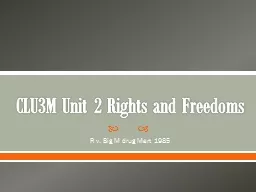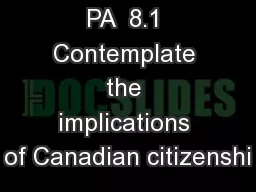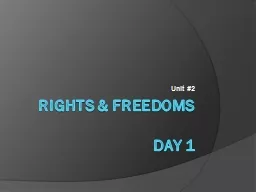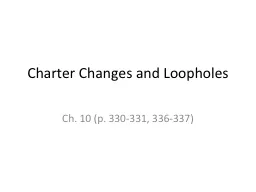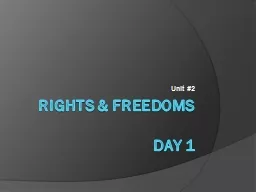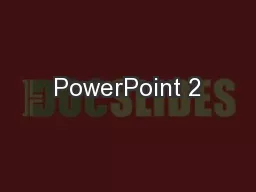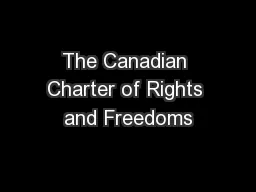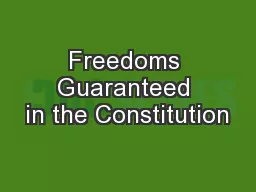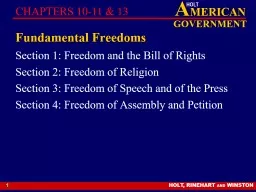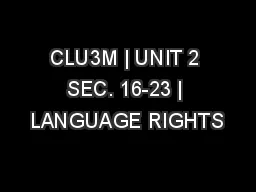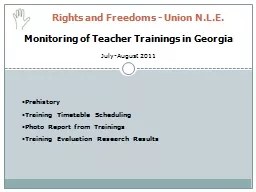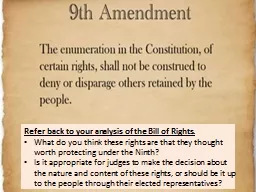PPT-CLU3M Unit 2 Rights and Freedoms
Author : stefany-barnette | Published Date : 2017-05-07
R v Big M drug Mart 1985 R v Big M Drug Mart Sunday May 30 1982 Calgary Big M Drug Mart was pen for business and allowed several transactions The Lords Day Act 1906
Presentation Embed Code
Download Presentation
Download Presentation The PPT/PDF document "CLU3M Unit 2 Rights and Freedoms" is the property of its rightful owner. Permission is granted to download and print the materials on this website for personal, non-commercial use only, and to display it on your personal computer provided you do not modify the materials and that you retain all copyright notices contained in the materials. By downloading content from our website, you accept the terms of this agreement.
CLU3M Unit 2 Rights and Freedoms: Transcript
Download Rules Of Document
"CLU3M Unit 2 Rights and Freedoms"The content belongs to its owner. You may download and print it for personal use, without modification, and keep all copyright notices. By downloading, you agree to these terms.
Related Documents

